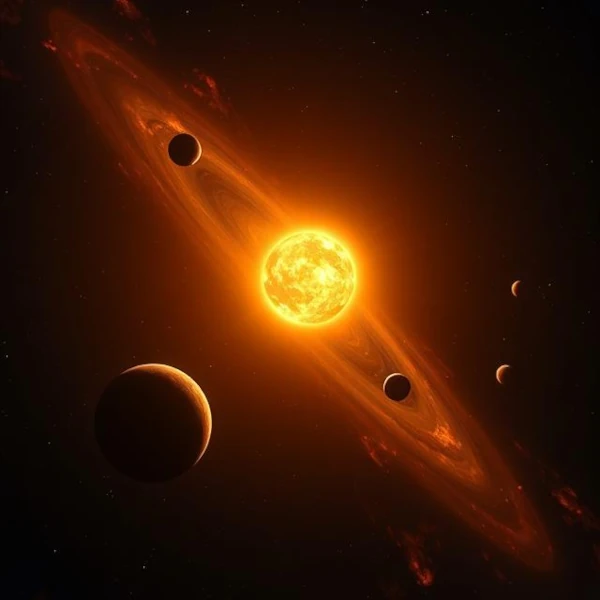
The formation of the Solar System is a complex process that began about 4.6 billion years ago. Asteroids, remnants of the protosolar nebula, are witnesses to this era. These celestial bodies never managed to clump together to form a planet, mainly due to Jupiter's powerful gravitational perturbations.
Asteroids exhibit incredible diversity in size, composition, and orbit. They are generally classified into three main categories based on their composition:
Most asteroids are concentrated in the main belt, located between Mars and Jupiter. However, distinct populations also exist:
As highlighted by Giuseppe Piazzi (1746-1826), discoverer of the first asteroid Ceres, these celestial bodies are precious archives of the Solar System's history. Their study allows us to:
In the protoplanetary disk, dust grains agglomerated through collisions and electrostatic forces to form planetesimals. These bodies then grew through gravitational accretion, giving rise to asteroids and planetary embryos.
Asteroids represent fragments of primitive matter that did not participate in planet formation. They testify to the original composition of the protoplanetary disk and have contributed to:
The transition from dust to asteroids and then to planets illustrates how very small bodies can lead to the formation of massive and stable structures.
The following table illustrates the scale of Solar System bodies and their role in planetary accretion:
| Body Type | Approximate Size | Relative Mass | Comment |
|---|---|---|---|
| Dust grains | 1 µm - 1 mm | Very low | First accretion elements, electrostatic collisions dominant |
| Planetesimals | 1 km - 100 km | Low | Gravitational accretion, formation of planetary embryos |
| Asteroids | 1 km - 1000 km | Medium | Primitive fragments, transport of organic matter and water |
| Planets | ≈ 3000 km - 140,000 km | Very high | Final accumulation of planetesimals and embryos, stabilized system |